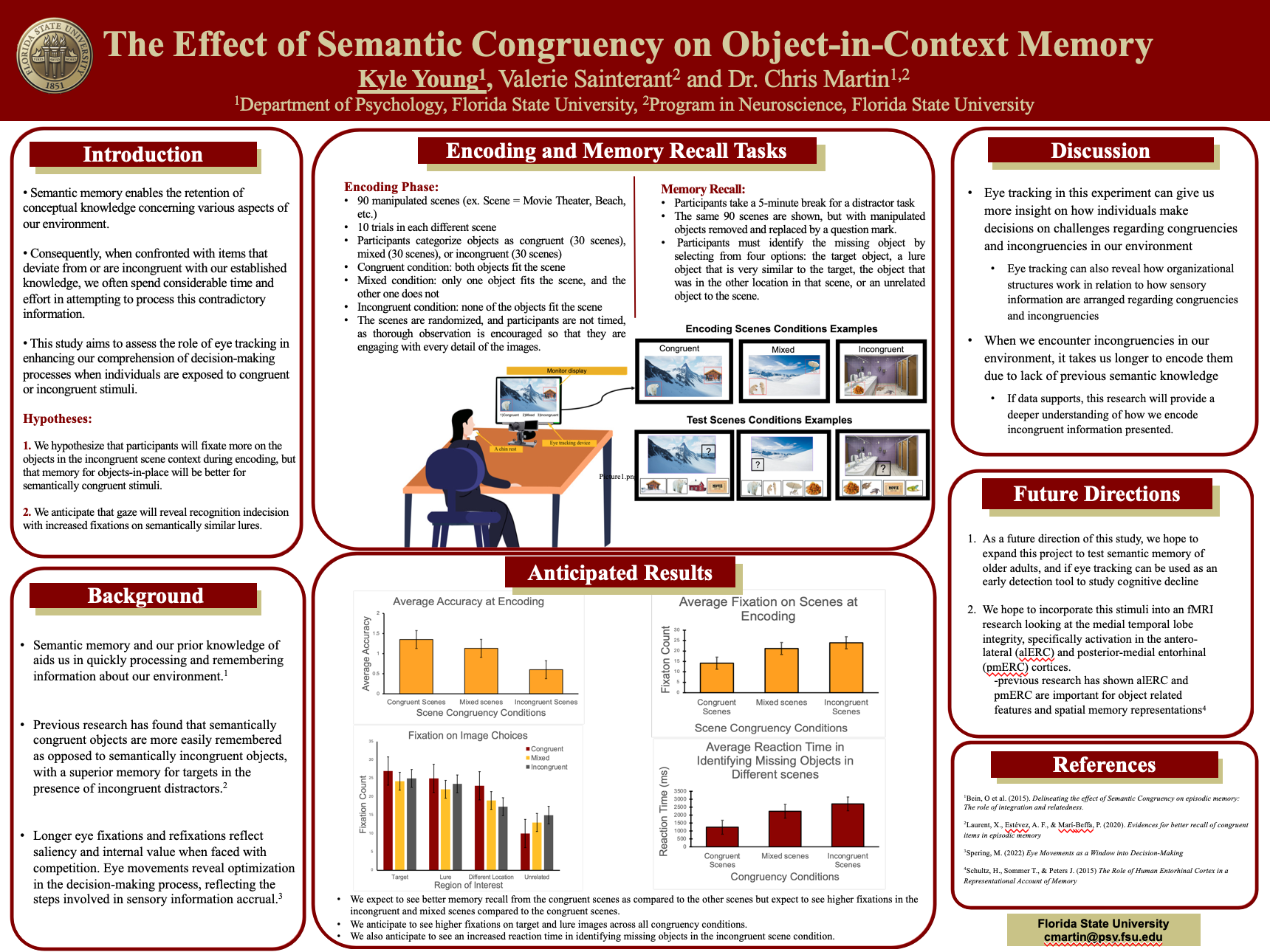Research Symposium
24th annual Undergraduate Research Symposium, April 3, 2024
Kyle Young Poster Session 4: 2:45 pm - 3:45 pm /286
BIO
My name is Kyle Young and I am from Gulf Breeze, Florida. I am currently in my bachelors program studying Psychology at Florida State University with hopes to continue my academic career studying neuropsychology in an accredited Ph.D. program. I am currently working in the Martin Memory Lab where we conduct memory related research as it relates to the physiology and function of the brain as well as behavioral aspects of memory.
The Effect of Semantic Congruency on Object-in-Context Memory
Authors: Kyle Young, Chris MartinStudent Major: Psychology
Mentor: Chris Martin
Mentor's Department: Department of Psychology, Department of Neuroscience Mentor's College: Florida State University Co-Presenters:
Abstract
In our daily lives, we encounter countless objects in many different contexts. Adaptive behavior sometimes depends on our ability to remember specific object-context associations, such as the location of your car keys. These memories are thought to be strongest, and therefore most likely to be successfully retrieved, when objects and contexts are semantically congruent. Indeed, previous research indicates that we are better at identifying objects embedded in semantically congruent contexts (e.g., a roulette wheel in a casino) than we are objects in incongruent contexts (e.g., a roulette wheel in a lecture hall). Expanding on these findings, this study investigated whether eye movements can reveal mnemonic biases in an object-in-context memory task in which we systematically manipulated object-scene congruency. During encoding, participants were asked to indicate whether two objects superimposed on categorized scenes were congruent or incongruent with the scene context. During a subsequent object-in-context recognition test, the objects were removed from the scenes and participants had to choose which of four alternative objects occupied a specific location in the scene. The alternatives included the target object, the second object previously encoded in a different location of the scene, a lure that was semantically similar to the target, and a foil that was unrelated to the target. We hypothesize participants will fixate more on the objects in the incongruent scene context during encoding, but that memory for objects-in-place will be better for semantically congruent stimuli. Furthermore, we anticipate that gaze will reveal recognition indecision with increased fixations on semantically similar lures.
Keywords: Semantic Memory, Congruencies, Incongruence, Eye Fixation


